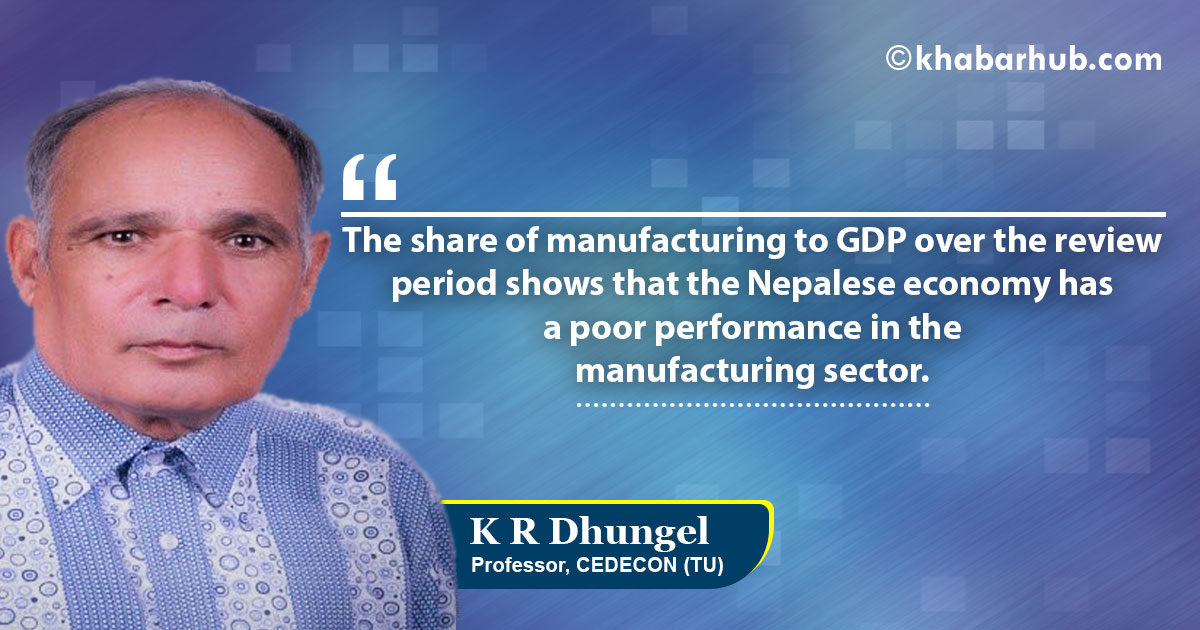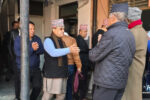Remittance helps to raise consumption of the people of the bottom 40 percent. As the income of the people of this group rises, consumption also rises. The country is lacking to produce goods to meet the growing demand. Import is the basic weapon to meet this demand.
Remittance and import
A positive relationship exists between remittance and import. It means both remittance and import rise over time or they move in the same direction. The share of import to GDP exceeds the share of remittance to GDP, which means the share of import is larger than the share of remittance.
Both import and remittance are increasing over time and implies that they move in the same direction indicating with every increase in remittance leads to increase import. As the share of remittance to GDP increases from 1.2 percent in 1993-1997 to 29.79 percent in 2013-17, the share of import to GDP also jumps at a greater speed from 33.61 percent to 40.37 in the same period.
The inflow of large volume of remittance increases import over time. It implies that scarce resource coming from the sweat of Nepalese youths has largely been spent in the import of goods mainly for consumption. This trend, if continued, will bring disaster in the economy in the days to come, enlarging the size of the trade deficit.
Nepal is lacking by appropriate policies along with security to divert scarce resource into the productive sector. Without this, people will prefer to consume more rather than to save and invest what they are supposed to earn. In this perspective, investment if any will flow in the lucrative business sector as it happens today which yield high return with less or no risk.
Remittance and agriculture
As described above, youths particularly involved in farming are migrated. People prefer to migrate from Nepal to the rest of the countries of the world and even rural area to urban area where the market for their labor is abundant. This tendency among other things makes the agriculture sector less responsive.
During the review period, agriculture and remittance as a share of GDP have an inverse relationship. It means the share of agriculture to GDP has been decreased while the share of remittance inflow has been increased. The share of agriculture to GDP in the period 1993-97 was nearly 40 percent. The trend of agricultural share to GDP onwards is being declined. It decreases by – (25.65 percent) to reach 29.31 percent in 2013-17. In contrast, the share of remittance to GDP during the period 1993-97 was 1.2 percent increases at the annual growth rate of 2382 percent to reach 29.79 percent in 2013-17.
It indicates that the share of agriculture and remittance is coming to par in the period 2013-17. From this scenario, the economic base of Nepal has been shifting from the subsistence farm economy to the remittance economy. If this tendency continued in the days to come, Nepal will be dependent on the import of agricultural product from India and elsewhere.
Remittance and manufacturing
The share of manufacturing to GDP over the review period shows that the Nepalese economy has a poor performance in the manufacturing sector. Development of the manufacturing sector among other things is a part of balanced economic development.
As described above, Nepal is importing goods from foreign countries particularly from India and China to meet the growing demand supported by remittance mainly for consumption. This makes our economy over-dependent on import. It is the outcome of the poor performance of the manufacturing sector.
The share of manufacturing value added to GDP in the period 1993-97 was 8.82 percent. It reached 5.54 percent in the period 2013-17 declining at the annual growth rate of – (37.2 percent) while the trend of the share of remittance to GDP is increasing. It jumps to 29.79 percent in 2013-17 from 1.2 percent in 1993-97.
Increasing remittance inflow has not been able to contribute to the manufacturing sector. Instead, it seems that it discourages to invest in this sector as the share of manufacturing to GDP has been declining over the review period. It indicates that remittance does not help to grow the manufacturing sector instead it makes this sector to deteriorating.
Conclusion
The co-movement of export and remittance is opposite over the review period indicates that the Nepalese economy is in Dutch disease. The large inflow of remittance is not able to increase export. However, it reduces export over the years. Consumption rises as the rise in remittance over time. Lack of domestic production to meet the growing demand, in turn, import rises as the rise in remittance over time. Thus, remittance helps to raise import.
Misguided policy discourages people’s willingness to save and invest. It also discourages to invest in industrial entities. This makes the country over-dependent on import. Nepal is an agricultural country. Agriculture supports the livelihood of people accounted for over 70 percent. However, the share of agriculture to GDP in the past two and half decades decreases.
In contrast, the share of remittance to GDP in the same period increases. The share of remittance and agriculture to GDP becomes equal in the period 2013-17. Remittance contribution in the manufacturing sector is not promising which is a leading sector to decrease import and increase export.
In terms of as a share of GDP with every increase in remittance manufacturing value added decreases over time. Goods which cannot be traded in the international market are called non-tradable goods. It means they are traded in the national, regional and local market.
One of the examples of non-tradable goods is real estate. The portion of remittance excess over the consumption (saving) is being invested in real estate. The price of real estate in urban and semi-urban places is skyrocketing throughout the nation. It is because of the lack of investment opportunities in other sectors of the economy. Export is declining of tradable goods as seen in the preceding paragraphs. This proves that Nepal is catching up the Dutch disease.
Views expressed in this article are the author’s own and do not necessarily reflect the stance of Khabarhub.









Comment